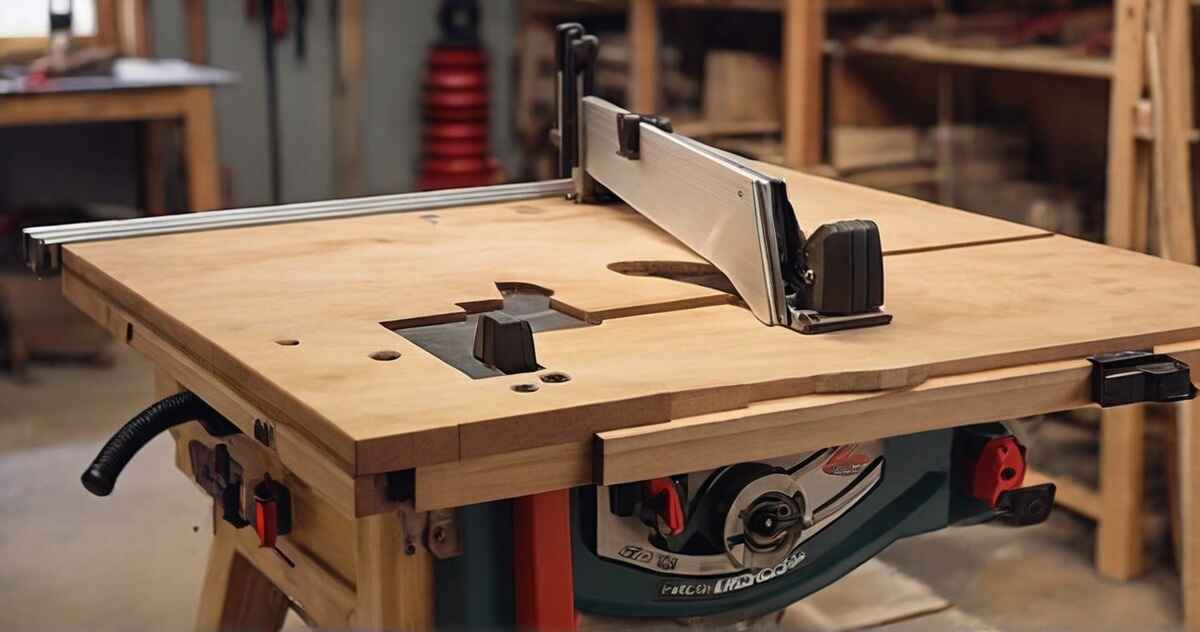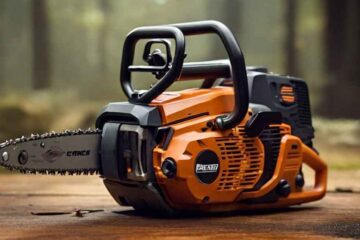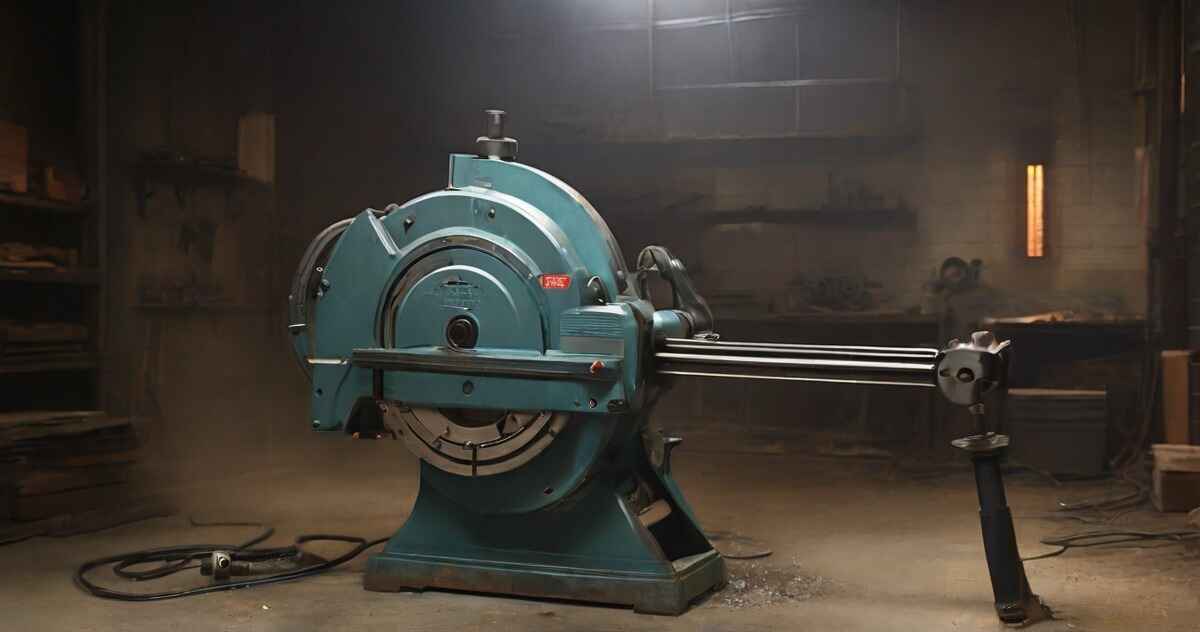Table saw safety is of utmost importance to prevent serious accidents and injuries. Users should understand how does a table saw know it’s a finger to mitigate potential risks. In this article, we explain how table saws can detect and react to fingers. You can tell wood apart from flesh by using mechanisms such as flesh detection. These mechanisms include quick shutdown and blade brakes. Learning how these safety measures work can make table saw users safer.
The Anatomy of Table Saw
There are several main components to a table saw. When using a table saw, people use their fingers to understand how each part works.
Blade
The blade is the primary cutting tool of the table saw. It rotates at high speed to make precise cuts in different materials. Need to to handle the blade with caution due to its potential danger to human fingers.
Fence
The fence helps you position the workpiece for cutting by guiding and referencing it. It ensures accuracy and consistency in cuts.
Riving Knife
The riving knife is a safety feature. It prevents kickback by aligning the workpiece with the blade. It reduces the risk of the workpiece binding and throwing it back at the operator.
Push Stick
A push stick is a tool that helps keep your hands safe while pushing the workpiece through the blade. It helps prevent accidental contact between fingers and the blade.
The Dangers of Table Saws
Tablesaw accidents can have severe consequences, including amputations and severe lacerations. To take preventive measures, it’s crucial to understand how accidents occur.
Statistics on table saw accidents
Injuries caused by table saw accidents range from minor cuts to amputations.
Common scenarios leading to accidents
Leaking fingers, insufficient safety equipment, and incorrect positioning.
Potential consequences
Table saw blades can injure nerves, tendons, blood vessels, and bones. In some cases, it can cause permanent disabilities and affect a person’s quality of life.
Safety Features and Mechanisms
Table saw manufacturers incorporate various safety mechanisms to prevent accidents. For safe operation, you must understand how these features work.
Blade guards and splitters
Blade guards and splitters are safety devices on the table saw. They stop direct access to the blade. These barriers keep fingers away from cutting areas.
Purpose and functionality
The main purpose of blade guards and splitters is to keep the operator’s hands safe from the blade.
Types of blade guards
Overhead, side and self-adjusting blade guards are some types. Protective and easy-to-use features vary between types.
Anti-kickback pawls
These devices stop the workpiece from flying into the operator’s hands.
How do they prevent backward movement?
The workpiece moves backward, but the anti-kickback pawls stop it from flying back.
How Does a Table Saw Know It’s a Finger? Understanding the Physics Behind the Detection
Table saws can recognize and respond to human fingers by looking at how they look and move.
Use of electrical conductivity
Table saws use the fact that our skin conducts electricity to sense when fingers touch the blade.
How table saw electrical systems work
The table saw sends a small amount of electricity through the blade. When the blade touches the skin, it completes the circuit and triggers a reaction.
Conductivity detection methods
Table saws detect electrical conductivity using sensors. The sensors measure changes in the circuit caused by skin contact.
Limitations and accuracy
The device is usually trustworthy. But, there are some things that can impact its precision. These include insulation, materials, and the condition of the skin.
Monitoring for electric field disruptions
Table saw safety systems track electric field disruptions for contact detection.
Capacitance sensing technology
We use capacitive sensors to track electric fields around the blade. Human skin disrupts the electric field, triggering an alarm.
Capacitive sensors vs. skin conductance
Capacitance sensors can detect finger contact with extra safety over electrical conductivity.
Reactivity to various skin types and conditions
Capacitive sensors ensure effective detection regardless of skin type or condition.
The Role of Infrared Sensors
Infrared technology designs table saw blades to detect finger contact. Infrared sensors identify human skin heat and trigger safety measures.
Introduction to Infrared Technology
Infrared (IR) sensors detect and measure the thermal radiation emitted by objects. Table saw safety systems use them in various applications.
Infrared sensors and their applications in table saw safety
Table saws use infrared sensors to detect heat emitted by human skin near the blade.
Detecting heat from human skin
Infrared sensors can detect human skin to determine if a finger is nearby.
Differences between contact-based sensors
Infrared sensors don’t need to touch the skin, so false alarms are less likely.
Accuracy and sensitivity considerations
Table saw safety systems use special sensors that can detect if a finger is close.
Machine Learning Algorithms in Finger Detection
With machine learning algorithms, table saw blades can detect fingers.
Introduction to machine learning in table saws
Artificial intelligence algorithms recognize patterns and predict outcomes. They ease effective accident prevention in table saw safety.
Training models for finger identification
We train the algorithms by using large datasets that have labeled finger positions. This helps us develop accurate finger detection models.
Dataset collection and labeling
Dataset collection and labeling are crucial to training machine learning models. To ensure reliable predictions, we need to label each instance .
Recognizing finger patterns
Using machine learning, we can identify finger patterns that show possible blade contact. This helps us take immediate action.
False positives and false negatives
Machine learning algorithms can make mistakes. They might misidentify a finger or not identify it at all. Minimizing these errors is crucial for effective safety measures.
Challenges in avoiding false alarms
It can be challenging to develop machine learning algorithms to avoid false alarms. Advances in algorithm design reduce false detection rates, yet.
Limitations and Challenges
Some tables saw safety mechanisms face limitations and challenges that affect their performance.
Dust and debris interference
Dust and debris can clog sensors and block mechanisms. This makes it hard to detect finger contact .
Extreme temperature conditions
Extreme temperatures can affect the performance of safety mechanisms.
Identifying unusual finger positions and orientations
Safety mechanisms may have difficulty detecting unusual finger positions and orientations.
Detection challenges with uncommon scenarios
Non-standard shapes and materials of workpieces may pose challenges to safety mechanisms.
Industry Regulations and Standards
We need to promote table saw safety. Manufacturers should follow safety rules and standards.
Overview of safety regulations
Safety regulations mandate safety features and practices by table saw manufacturers.
Table saw safety standards and their impact
Organizations such as OSHA and CPSC develop safety standards for table saws.
Compliance requirements
Products must follow safety standards to ensure their safety and performance.
Training and Education for Table Saw Operators
Table saw operators need proper training and education to prevent accidents.
Importance of training in preventing accidents
Table saw training provides operators with the skills and knowledge to prevent accidents.
Safety guidelines and best practices
Keep a safe distance between you and the blade, and wear appropriate safety equipment.
Proper use of safety equipment
Operators need to know how to use blade guards, splitters, kickback pawls, and push sticks.
Maintenance and inspection routines
You should maintain and inspect safety mechanisms and equipment as a whole.
Correct handling techniques
When operating, operators need to know where to put their hands, how fast to feed, and stay focused.
New Innovations and Advances in Table Saw Safety
Table saw manufacturers have added many new safety features in the past few years.
Current research and developments
Continuing research into safer table saws is being conducted by manufacturers and researchers.
Advances in flesh-sensing technology
Detecting finger contact has become easier with advancements in technology.
Collaborative robots in table saw safety
Robotic cobots provide real-time monitoring and help during cutting to enhance safety.
Integration of artificial intelligence
We integrate machine learning algorithms to improve finger detection accuracy.
Prototype testing and feasibility studies
Extensive testing and feasibility studies conduct before implementing new safety innovations.
Potential implications for future table saw design
Future table saw designs should increase safety without reducing efficiency.
FAQs
How effective are standard table saw safety mechanisms?
Table saw safety mechanisms prevent finger contact accidents . Safety guidelines and caution are crucial for operators.
Can table saws differentiate between fingers and other body parts?
Table saws detect only direct contact with the blade, regardless of body part. So, they may not distinguish between fingers and other body parts.
How often should one inspect table saw safety features?
Table saw safety features must follow the manufacturer’s guidelines. Additionally, daily pre-operation checks are essential.
Are there any alternative safety options for table saw users?
Some tables saw users change existing safety features or incorporate aftermarket safety devices. Any alterations must, but, follow industry standards.
What are the legal implications in case of a table saw accident?
Legal implications depend on jurisdiction, circumstances, and safety regulations. Safety guidelines are essential, emphasizing both operator and manufacturer liability.
Conclusion
Understanding how does a table saw know it’s a finger is crucial to user safety. Regulations and training programs illustrate the importance of safety features. Innovations in table saw design and protection promise enhanced performance. Operators can prevent life-altering accidents by prioritizing table saw safety.




